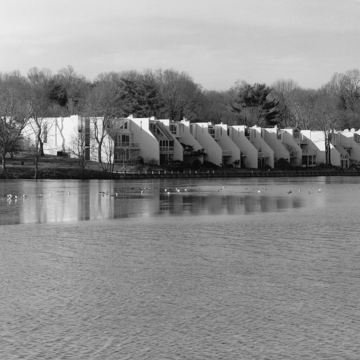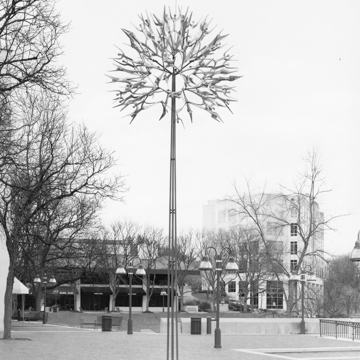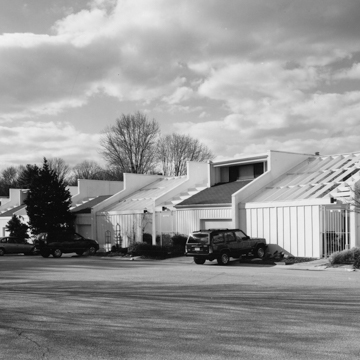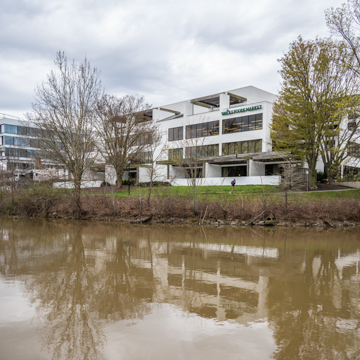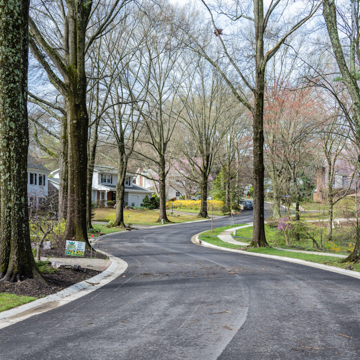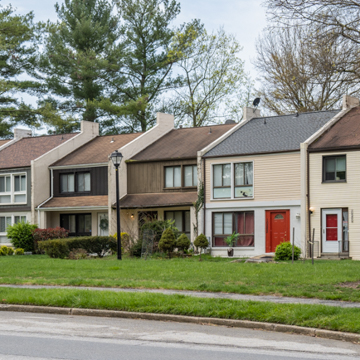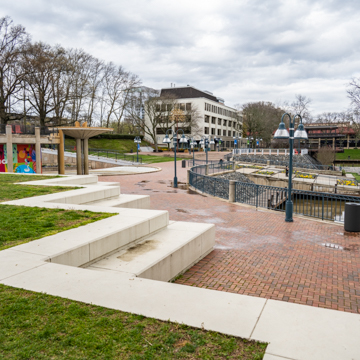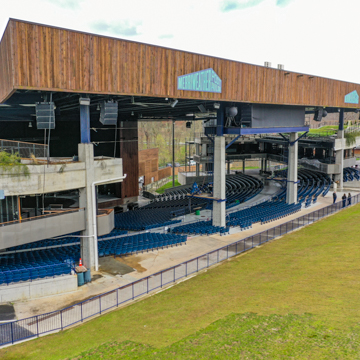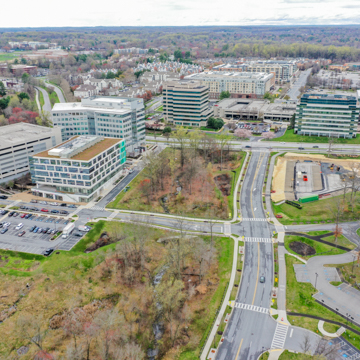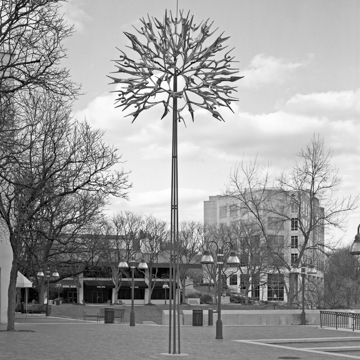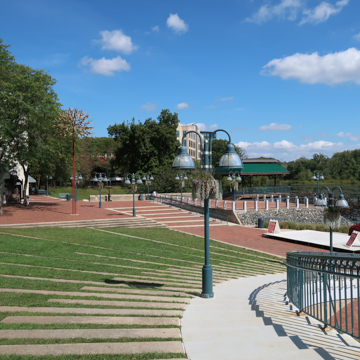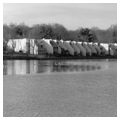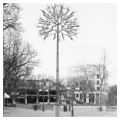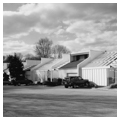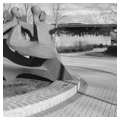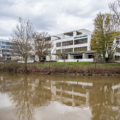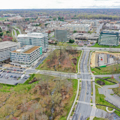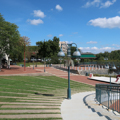Located midway between Baltimore and Washington, Columbia is one of the most successful and innovative New Towns built in the United States during the second half of the twentieth century, and the most ambitious of Rouse’s many ventures. Responding to the suburban sprawl following World War II, progressive large-scale developers pursued New Towns as a marketable solution to the social and environmental ills associated with conventional suburban planning, such as racial and socioeconomic homogeneity, overreliance on the automobile, and a lack of green space. Columbia and Reston, its contemporaneous counterpart in northern Virginia, were among the most publicized New Town experiments nationwide.
Rouse got his start in mortgage banking in the 1930s, establishing The Rouse Company in 1954 to become one of the country’s largest and most influential commercial developers and an early pioneer of enclosed shopping malls and later “festival marketplaces” such as Harborplace in Baltimore. He began planning Columbia in 1962, amassing approximately fourteen thousand acres within the year. Rouse assembled a professional team to develop a master plan, ranging from architects, landscape architects, and engineers to sociologists, housing economists, and health and education specialists to create an overall concept for Columbia that aimed to “provide the best possible environment for the growth of people.”
The plan encompassed ten “villages,” each containing residential neighborhoods and commercial, educational, and recreational facilities, arrayed around a town center. The villages included green space, pedestrian-friendly paths, and a variety of housing types to accommodate every income level. Curvilinear roadways, coordinated signage, and public art contribute to the aesthetic distinctiveness and sense of community. Columbia’s cultural center is formed by the Merri-weather Post Pavilion and near-by Lake Kittamaqundi with its lakefront promenades, cafés, and the People Tree sculpture. The pavilion (1967) and the lakefront former Rouse Company headquarters building (1969) at 10475 and 10275 Little Patuxent Parkway, respectively, represent architect Frank Gehry’s first major commissions. Adjacent is Columbia Mall, the commercial and retail center, which opened in 1971. Construction at Columbia began in 1966, and Rouse officially dedicated the village of Wilde Lake in 1967. The final village, River Hill, was begun in 1990. Columbia remains one of the area’s most desirable places to live, and in many ways a bedroom community for nearby urban centers.
References
Bloom, Nicholas Dagen. Merchant of Illusion: James Rouse, America’s Salesman of the Businessman’s Utopia. Columbus: Ohio State University Press, 2004.
Columbia Association. “History of Columbia.” Accessed December, 30 2014. www.columbiaassociation.org.
Community Research and Development, Inc. “Columbia: A New Town for Howard County.” November 11, 1964. Accessed December, 30 2014. www.columbiaassociation.org.
Goldberger, Paul. “James W. Rouse, 81, Dies; Socially Conscious Developer Built New Towns and Malls.” New York Times, April 10, 1996.
Mitchell, Joseph Rocco, and David L. Stebenne. New City Upon a Hill: A History of Columbia, Maryland. Charleston, SC: History Press, 2007.
Olsen, Joshua. Better Places, Better Lives: A Biography of James Rouse. Washington, DC: Urban Institute, 2003.
Stamp, Jimmy. “James W. Rouse’s Legacy of Better Living through Design.” Smithsonian Magazine, April 23, 2014.















